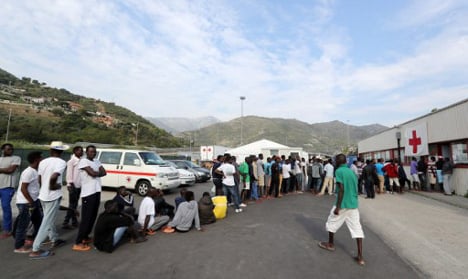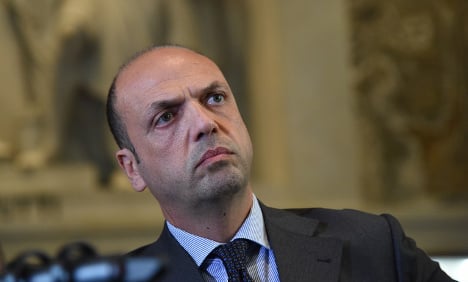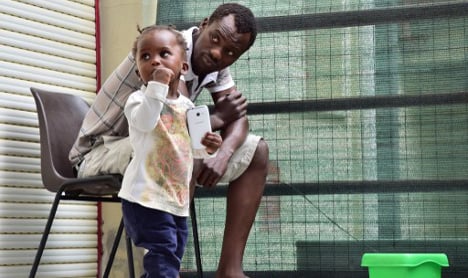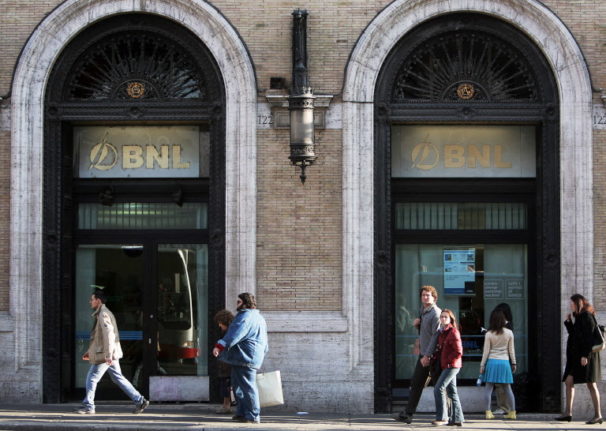Adding to the sense of an impending crisis, many have not received a cent in state funding for months.
Some 132,000 mostly African migrants have landed on Italy's southern shores since the start of 2016; a rate of arrivals that has been steady for the best part of three years now. Thousands more have reached the country overland.
But while in previous years the vast majority would continue their journeys to northern Europe, the introduction of EU-backed “hotspot” processing centres to ensure migrants are identified at their first European entry point and tighter border controls installed by France, Switzerland and Austria are now creating roadblocks along this well-worn route.
 Italy-bound migrants on a crowded boat. Photo: Gabriel Buoys/AFP
Italy-bound migrants on a crowded boat. Photo: Gabriel Buoys/AFP
The result is that Italy's centres are getting ever more packed: they were housing 22,000 people at the end of 2013, 66,000 at the end of 2014, 103,000 at the end of 2015 and this week the total exceeded 160,000. In addition Italy is looking after 15,000 minors who arrived in the country unaccompanied.
Sharing migrant burden
Interior Minister Angelino Alfano will next week present a new plan for distributing the migrants across the country with the goal of ensuring fair burden-sharing on the basis of 2.5 asylum seekers per 1,000 residents.
He has made clear he intends to press ahead with the proposal whether local authorities like it or not.
The vast majority of existing centres are run by cooperatives or NGOs who were promised 25-35 euros per day for each person they provide with lodging, clothes and other services including legal aid or psychological support.
But the state has stopped paying them.
According to umbrella organization Confcooperative, whose members are looking after some 35,000 people, payment backlogs are averaging ten 10 months in Sicily, between four to six months in the region around Rome and four months in Lombardy, the region that includes Milan.

Migrants at a Red Cross centre in Ventimiglia. Photo: AFP
The Italian Red Cross, which has about 70 centres, says “there have been delays in payments for months and months now.
“We are talking about millions of euros in total, the situation is very difficult,” its president Francesco Rocca told AFP.
“If it was an administrative issue, we would understand. But it is actually a political problem, a very serious lack of care.”
No payments since March
The budget for migrant reception, which exceeded a billion euros in 2015, was only partially renewed for 2016.
According to press reports there is a funding shortfall of 600 million euros to clear existing debts and another 400 million needed to get to the end of the year.
“The problem is very real: we will having to dip into our reserves to pay creditors … when the finance ministry gives us the money, we will pay,” Alfano said this week, without confirming the scale of the financial gap.
 Angelino Alfano. Photo: Olivier Morin/AFP
Angelino Alfano. Photo: Olivier Morin/AFP
The apparent cutbacks have come despite Prime Minister Matteo Renzi saying Italy's spending on the migrant crisis should not be counted by the EU in its assessment of the country's deficit level, a demand he reiterated on Wednesday as he slashed the country's growth forecasts.
Neither Renzi's office nor the finance ministry responded to an invitation to comment.
Situation critical
Meanwhile, the situation is becoming critical for some of the smaller organizations running centres. That is the case at the Oasi Don Bosco, a hotel inland from the Sicilian city of Catania that was converted in 2015 into a reception centre for 112 people.
At the request of local authorities, the centre's director Francesco Magnano increased its capacity by putting extra beds in the rooms and then transformed the facility into a centre for unaccompanied minors, who make up an ever-increasing percentage of the new arrivals.
Now he is feeding and lodging 160 boys aged between 15-17 and has to pay 27 salaries to teachers, educational assistants, a nurse and his cooks. He has not had a penny from the state since March.
“In a few months we will not be able to go on,” he told AFP.





 Please whitelist us to continue reading.
Please whitelist us to continue reading.
Member comments